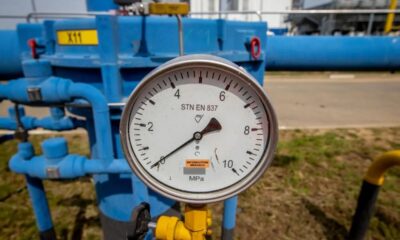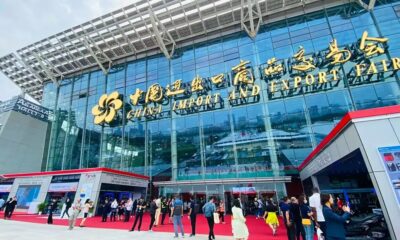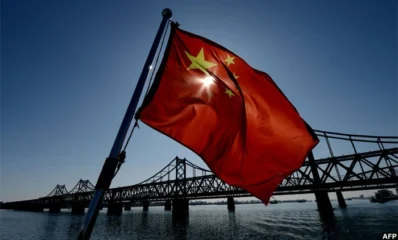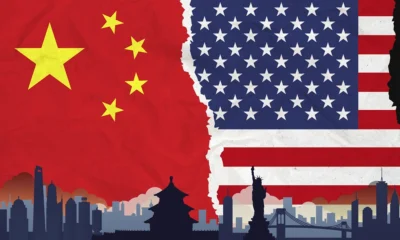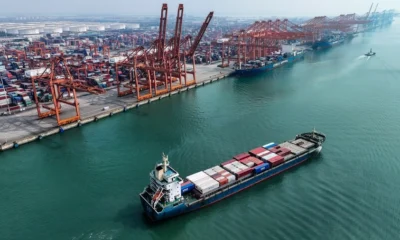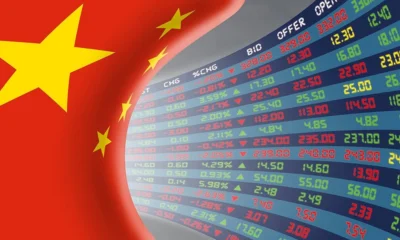Asia
Economists cut China growth forecasts to 4.8 per cent

Chinese economists have cut their forecasts for the country’s gross domestic product in 2024 in the latest quarterly Nikkei and Nikkei Quick News survey, underlining the pressure on authorities struggling to revive growth.
The average forecast of 28 local experts on China’s economy points to annual GDP growth slowing to 4.8 per cent, down from 4.9 per cent in the previous survey in July. Some of the economists submitted or updated their responses after Chinese authorities last week cut interest rates, supported the property market and pumped billions of dollars into the stock market, sending shares soaring. For those who responded before the stimulus began, the Nikkei asked whether they wanted to change their forecasts.
Of the 25 economists who made full-year growth forecasts in the previous quarterly survey, 16 cut their outlooks, while nine held their expectations steady. The overall range of growth forecasts shifted downwards from 4.8 to 5.3 percent to 4.5 to 5.0 percent. The average forecast for the July-September quarter is 4.6 percent, a further deceleration from the 4.7 percent growth recorded in the April-June period and weaker than the 4.9 percent expansion in the third quarter of last year. The quarter-on-quarter growth forecast for the third quarter, which better reflects the momentum of the economy, is 1.1% in seasonally adjusted terms, slightly higher than the 0.7% growth recorded in the second quarter.
Analysts warned of significant headwinds. KGI Asia’s Ken Chen cut his annual growth forecast to 4.9% from 5.3%, taking into account recent weaker-than-expected data ranging from industrial production and investment to retail and property sales. The current economic growth trend is still down, mainly due to the bottoming out of the property cycle and downward pressure from external demand,’ he said, suggesting that stimulus may not be enough to achieve the government’s annual GDP target of ‘around 5%’.
Despite policy efforts to lower mortgage rates and reduce the cost of buying, the housing sector remains a major drag. When economists were asked to pick the top three risks from a list of nine, the “sluggish housing market” topped the list, cited by 17 out of 20. This was followed by ‘weak consumer confidence’ and ‘no or inadequate policy’.
Hui Shan, chief China economist at Goldman Sachs, cut his forecast from 4.9% to 4.7%, saying that previous policy measures to stimulate the property market “may not be as effective”.
Tetsuji Sano, chief Asia economist at Sumitomo Mitsui DS Asset Management, said: ‘Consumer demand is likely to fall across the board as the population continues to age and the pension system is underdeveloped.
Property accounts for about 70% of Chinese household assets. This means that the fall in house prices has a direct negative wealth effect, reducing consumer confidence and fuelling deflation concerns.
There are clear risks that deflationary pressures could become entrenched,’ said Alex Muscatelli, Chief Economics Officer at Fitch Ratings. He noted that the GDP deflator, which reflects general price changes in the economy, has fallen on an annualised basis for five consecutive quarters, while prices of basic goods and services have remained flat.
China is heavily reliant on manufacturing and exports, especially as it has struggled to improve sentiment since the COVID-19 outbreak, but momentum in this sector is also starting to wane. Industrial production growth slowed to 4.5% y/y in August from 5.1% y/y in July.
This comes at a time of heightened trade protectionism, with the US, the European Union and Canada imposing additional tariffs on Chinese electric vehicles. Similarly, Indonesia has reimposed tariffs on goods such as textile imports, particularly from China, which came into effect in August.
Arjen van Dijkhuizen, senior economist at ABN AMRO Bank, noted that trade divergence has helped mitigate the impact of tariffs to some extent and that exports remain the key driver of China’s growth. ‘However, China’s supply-side strategy is contributing to escalating trade frictions, with the US, EU and others protecting strategic sectors from China’s [oversupply],’ he said.
Ongoing external and internal uncertainties appear to be behind the stimulus measures, which involve numerous central government agencies, including the People’s Bank of China.
It is rare for the PBOC to announce both a [reserve requirement ratio] cut and an interest rate cut at the same time, signalling the urgency policymakers feel to provide support,’ said Jing Liu, chief economist for Greater China at HSBC.
Jian Chang, chief China economist at Barclays, agreed. Recent developments signal that the Chinese leadership is taking a more proactive approach to tackling its most pressing structural problems. However, both bank economists left their annual forecasts unchanged at 4.9 per cent and 4.8 per cent respectively.
Looking beyond this year, the economists expect a gradual slowdown to 4.5 per cent in 2025 and 4.2 per cent in 2026, reflecting a long-term structural slowdown.
“The crisis in the housing sector, the associated loss of housing wealth and the need for households to repair their balance sheets, as well as uncertain income and job prospects in an uncertain economic environment, are hampering domestic consumption,” said Sophie Altermatt, economist at Julius Baer.
Wei Yao, chief Asia and China economist at Societe Generale, said ‘the current state of the economy calls for more radical measures’ and stressed the need for ‘restructuring of real estate and local government debt rather than further interest rate cuts to end the deflationary spiral’.
Asia
Japan’s prime minister skips NATO summit amid alliance strain
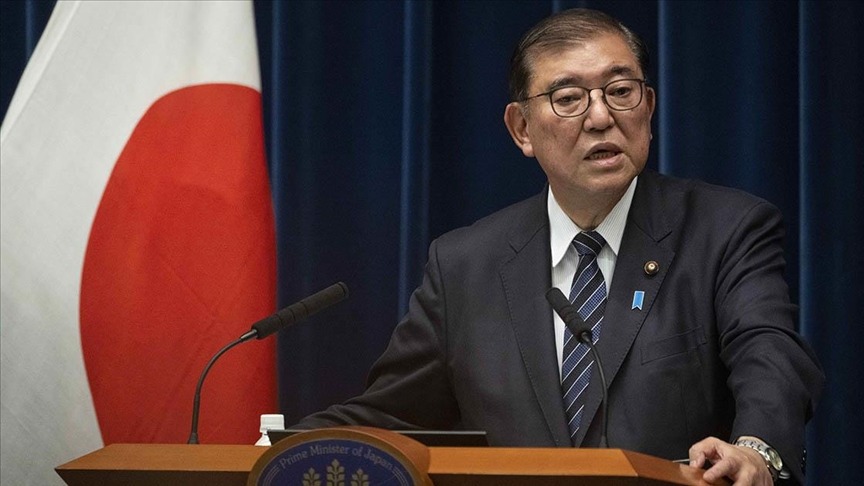
In the fifth month of Donald Trump’s second administration, the United States and its most crucial ally in the West Pacific, Japan, appear to be out of sync.
On Monday, Japanese Prime Minister Shigeru Ishiba announced he would not attend this week’s NATO summit in the Netherlands. Additionally, he neither supported nor condemned Trump’s decision over the weekend to attack Iran’s nuclear facilities.
These are just the latest signs of discord that have emerged in recent weeks. Japanese Foreign Minister Takeshi Iwaya is set to visit Washington for a QUAD foreign ministers’ meeting with his counterparts from India and Australia later this month, but the expected two-plus-two meeting of US and Japanese foreign and defense ministers will not take place.
A US official told Nikkei Asia in late May that an inter-agency agreement had been reached on the US side to demand that Japan increase its defense spending to 3% of its gross domestic product (GDP) as part of ongoing trade negotiations aimed at reducing tariffs.
However, a new figure of “3.5%” began circulating in Washington after US Defense Secretary Pete Hegseth met with his Australian counterpart, Richard Marles, during the Shangri-La Dialogue in Singapore on May 30.
A Pentagon statement released two days after the meeting said, “Secretary Hegseth conveyed that Australia needs to increase its defense spending to 3.5% of its GDP as soon as possible.”
US officials, led by Under Secretary of Defense for Policy Elbridge Colby, began stating that the new “fixed demand” for Asian allies was 3.5%.
Last week, Pentagon spokesman Sean Parnell formalized this by issuing a statement indicating that European allies had set a new “global standard” for US alliances at 5% of GDP. This statement was related to NATO Secretary General Mark Rutte’s recently announced spending targets of 3.5% for military procurements and 1.5% for related infrastructure.
A Japanese official told Nikkei that Tokyo was open to discussions on increasing defense spending, but the process appeared disorderly. Officials noted that Washington had not officially communicated any figures to Japan. It was also reported that Japanese officials had difficulty communicating directly with Colby.
Another Japanese official stated that if Japan were to increase its defense spending (currently 1.8% of GDP, with plans to reach 2% by fiscal year 2027), it would be a sovereign decision by Tokyo and would need to be explained with justifications that could be presented to the Japanese public.
Zack Cooper, a senior fellow at the American Enterprise Institute think tank, said the Trump administration had been “pretty inconsistent” in its approach to Japan, and this uncertainty would create a challenge for the alliance.
“Ishiba’s cancellation of the NATO meeting and the two-plus-two meeting, when put together, certainly form a concerning set of signals,” he said.
Cooper assessed, “To me, this suggests that Tokyo wants to wait for the upper house elections [on July 20] rather than engage directly with the Trump administration.”
Asia
US cries to China as Washington begins airstrikes in Iran

While the Middle East is going through one of its most tense periods, the world has been shocked by the news of a direct attack by the United States on Iran’s nuclear facilities. Washington has announced that Iran’s nuclear facilities no longer exist. At the same time, Tehran has warned in a strong tone that it will respond to this aggression.
This action was immediately met with widespread regional and international reactions. The United Nations, the European Union, global powers such as Russia and China, and America’s traditional allies in the West each took their own stance.
At an emergency meeting of the United Nations, Secretary-General Antonio Guterres described the move as a dangerous turn in an already crisis-ridden region. A wave of criticism has also emerged within the United States, with some describing the attack as successful.
At the same time, a number of lawmakers from both the Republican and Democratic parties consider Trump’s action to be without congressional authorization and unconstitutional.
Some reactions:
Russian envoy: US attack carried out without any provocation from Iran.
US Representative: The Iranian regime should not have nuclear weapons.
Iran’s ambassador to the Security Council: America once again sacrificed its security for Benjamin Netanyahu.
Israeli Ambassador to the Security Council: America changed the course of history by attacking Iran.
Rafael Grossi, the head of the International Atomic Energy Agency: Military attacks should not be carried out on nuclear facilities, saying he is ready to immediately travel to all countries regarding this case.
UK UN envoy: Military action alone cannot address concerns about Iran’s nuclear program, saying his country was not involved in Iran attack, referred to concerns about Iran’s nuclear program and said that military action alone cannot permanently address concerns about Iran’s nuclear program. He called on Iran to exercise restraint and urged the parties involved to return to the negotiating table.
France: Now is the time to end the attacks and return to negotiations.
But now why US cries to China for help to reopen Strait of Hormuz
Soon after a US airstrike in three locations, Iran closes the Strait of Hormuz, one of the world’s most important shipping routes. Now this move puts the US in trouble and US Secretary of State Marco Rubio has called on China to prevent Iran from closing the Strait of Hormuz.
However, it seems that the US is too late and according to Iran’s state-run Press TV, the decision was made by Iran’s Supreme National Security Council.
The US understands that any disruption on the supply of oil would have profound consequences for the economy and wants to play an emotional card with China to convince Iran to reopen the route as Beijing is also one of the largest buyers of Iranian oil.
It is reported that 20 percent of the world’s oil passes through the Strait of Hormuz, and major oil and gas producing countries in the Middle East use this route to export energy.
Meanwhile, US President Donald Trump has said that regime change is inevitable if the Islamic Republic cannot “make Iran great again.” His statement came following US military strikes on Iranian military facilities.
Iran: Game is not over even assuming the complete destruction of the nuclear sites
Ali Shamkhani, advisor to Ayatollah Ali Khamenei, the religious leader of Iran, has said in response to the US attacks that even assuming the complete destruction of the nuclear sites, the “game is not over”.
“Even assuming the complete destruction of the sites, the game is not over; because the enriched materials, indigenous knowledge, and political will remain intact,” he said.
He noted that “now the political and operational initiative with the right to self-defense is in the hands of the side that knows how to play smart and avoids blind shooting.”
Asia
Japan diverges from G7, urging restraint in Israel-Iran conflict
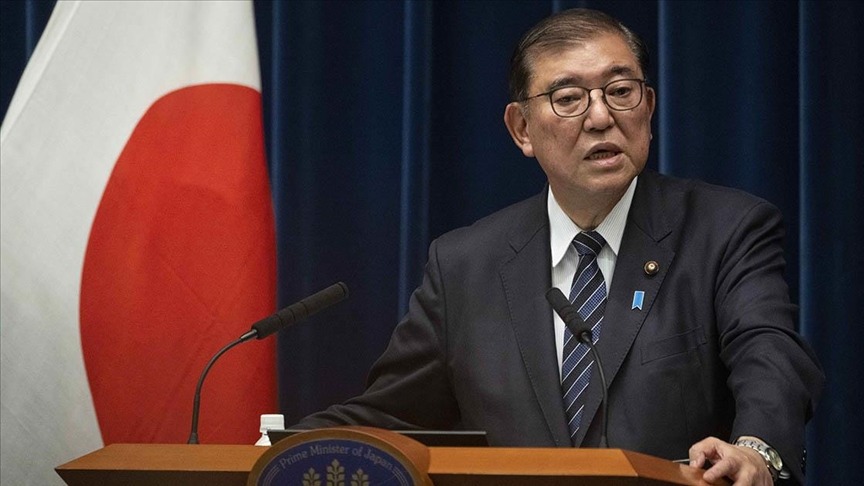
Japanese Prime Minister Shigeru Ishiba has affirmed Tokyo’s position of calling for “maximum restraint” from both Israel and Iran, despite a G7 statement earlier this week that supported Israel’s “right to self-defense.”
During a meeting of ruling and opposition party leaders on Thursday, Ishiba stated, “What the foreign minister said is the stance of the Japanese government. The G7 is the G7,” as reported by Tomoko Tamura, head of the Japanese Communist Party.
Japan, a close US ally in Asia, has long maintained friendly relations with Iran and has historically adopted a neutral approach to Middle East diplomacy, distinguishing itself from the pro-Israel stance of US administrations. Tokyo relies on the Middle East for the overwhelming majority of its crude oil imports.
G7 leaders convened in Kananaskis, Canada, and issued a statement backing Israel’s attacks on Iran. The statement affirmed Israel’s right to self-defense and condemned Iran as the “main source of regional instability and terrorism.” On June 13, when Israel’s attacks on Iran began, Japanese Foreign Minister Takeshi Iwaya declared: “The use of military force while diplomatic efforts are ongoing… is completely unacceptable and a source of deep regret. The Japanese government strongly condemns these actions.”
Iwaya added, “Japan is gravely concerned about the continuation of retaliatory attacks and strongly condemns any actions that could further escalate the situation.”
He continued, “Japan urges all parties to exercise maximum restraint and strongly calls for a de-escalation of tensions.”
During the meeting of party leaders, Tomoko Tamura, head of the Japanese Communist Party, highlighted the apparent contradiction between Iwaya’s statements and the joint G7 communiqué, suggesting the government was applying a “double standard.”
Prime Minister Ishiba responded, “What the foreign minister said is the stance of the Japanese government. The G7 is the G7.”
Meanwhile, the foreign minister announced at a press conference on Friday that a total of 87 Japanese nationals and their family members had been evacuated by land from Iran and Israel. Sixty-six individuals were evacuated from Iran to neighboring Azerbaijan, and 21 were evacuated from Israel to Jordan.
Following additional requests from Japanese citizens, a second land evacuation from Iran is scheduled for Saturday. Currently, there are approximately 220 Japanese nationals in Iran and about 1,000 in Israel.
In preparation for potential air evacuations, the government plans to dispatch two Air Self-Defense Force military transport aircraft to Djibouti in East Africa to have them on standby. With airports in Iran and Israel closed, Iwaya noted that the aircraft could be used if, for example, the airports reopen and conditions permit an airlift.
-

 Middle East6 days ago
Middle East6 days agoUS to launch major bombing campaign against Iran this weekend, Hersh reports
-

 Diplomacy2 weeks ago
Diplomacy2 weeks agoFormer diplomat warns forcing Iran out of the NPT is the greatest danger
-

 Middle East1 week ago
Middle East1 week agoIran targets Mossad and Unit 8200 in missile attack on Tel Aviv
-

 Diplomacy2 weeks ago
Diplomacy2 weeks agoFormer CIA analyst says Israel used ceasefire talks as a trap
-

 Middle East2 weeks ago
Middle East2 weeks agoNetanyahu’s government survives no-confidence vote as Haredi crisis is delayed
-

 Middle East1 week ago
Middle East1 week agoIranian missile attack causes heavy damage across Israel
-

 Middle East1 week ago
Middle East1 week agoIran signals NPT withdrawal amid rising tensions with Israel
-

 Middle East2 weeks ago
Middle East2 weeks agoIsrael strikes Iran’s nuclear program, killing high-level commanders


